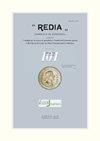储粮蛾幼虫间竞争的影响
IF 0.6
4区 生物学
Q3 ZOOLOGY
引用次数: 0
摘要
以人工饲料为材料,研究了隐尾苔草(Idaea inquinata)、头冠苔草(Corcyra cephalonica)和斑节苔草(Plodia interpunctella)之间的竞争。实验是用24小时内产下的蛋进行的。在第一个实验中,将一个物种的20个蛋与10g日粮和另一个物种中的20个鸡蛋一起放置在通风的皮氏培养皿中;在第二个实验中,添加了一个物种的20个蛋,并且在7天后,添加了另一个物种中的20个鸡蛋。实验在27±1°C、70±5%R.H.下进行。每个实验重复5次,并记录完成发育的天数和出现的成虫数量。C.cephalonica或I.inquinata的存在不影响P.interpunctella成虫的数量。只有当将P.interunctella卵添加到其他物种已经定植的培养基中时,才观察到发育的延迟。I.随着成年人数量的减少和完成周期的天数的增加,inquinata的竞争性较弱。如果同时启动P.interpunctella卵,则可以阻止I.inquinata的发育。最后一个物种的幼虫蚕食了另外两个物种的卵。I.inquinata是最不具竞争力的,因为其他两个物种的幼虫周期较长,活动能力较低,而且攻击性强,它们会蚕食其卵。本文章由计算机程序翻译,如有差异,请以英文原文为准。
THE EFFECTS OF COMPETITION BETWEEN LARVAE OF STORED-PRODUCT MOTHS
The competition between Idaea inquinata, Corcyra cephalonica, and Plodia interpunctella on an artificial diet was investigated. The experiments were carried out with eggs laid within 24 hours. In the first experiment, 20 eggs of one species were placed in a ventilated Petri dish with 10 g of diet and 20 eggs of one of the other species; in the second experiment, 20 eggs of one species and, after 7 days, 20 eggs of one of the other species were added. Experiments were carried out at 27±1 °C, 70±5% R.H. Each experiment was replicated 5 times and the number of days to complete the development and the number of emerged adults were recorded. The number of P. interpunctella adults was not affected by the presence of C. cephalonica or I. inquinata. A delay in the development was only observed when P. interpunctella eggs were added to the medium already colonized by the other species. I. inquinata was the less competitive, as the number of adults decreased and the days to complete the cycle increased. The development of I. inquinata was prevented if P. interpunctella eggs were started at the same time. Larvae of this last species cannibalized eggs of the other two species. I. inquinata was the least competitive due to the longer cycle, the lower mobility and the aggressiveness of the larvae of the other two species that cannibalized its eggs.
求助全文
通过发布文献求助,成功后即可免费获取论文全文。
去求助
来源期刊

Redia-Giornale Di Zoologia
ZOOLOGY-
CiteScore
1.20
自引率
20.00%
发文量
18
审稿时长
>12 weeks
期刊介绍:
Redia supports its long history of basic and applied research in entomology and invertebrate zoology in the field of crop and forest tree protection responding at the same time to the increasing need of innovation and technological improvement.
 求助内容:
求助内容: 应助结果提醒方式:
应助结果提醒方式:


